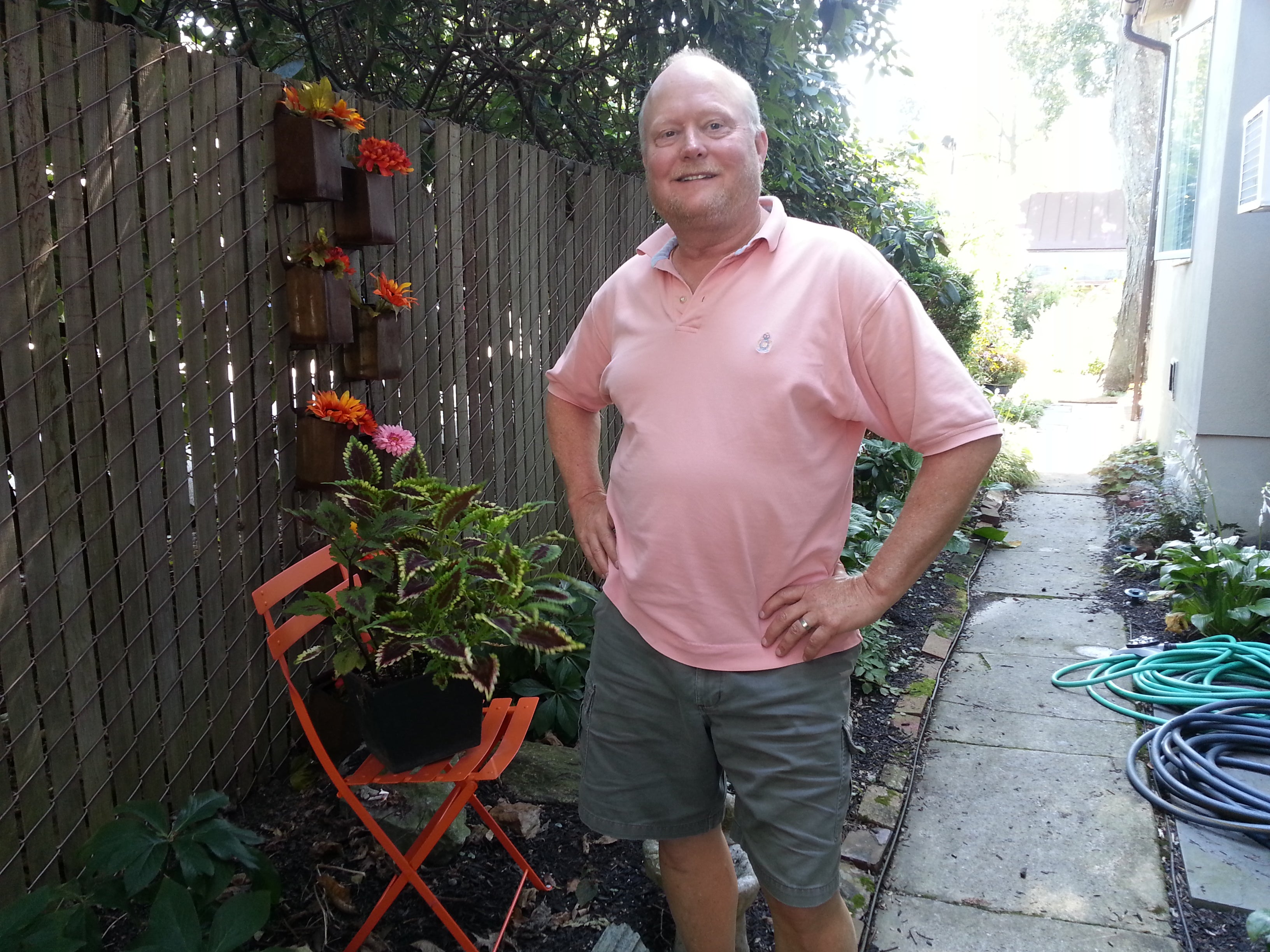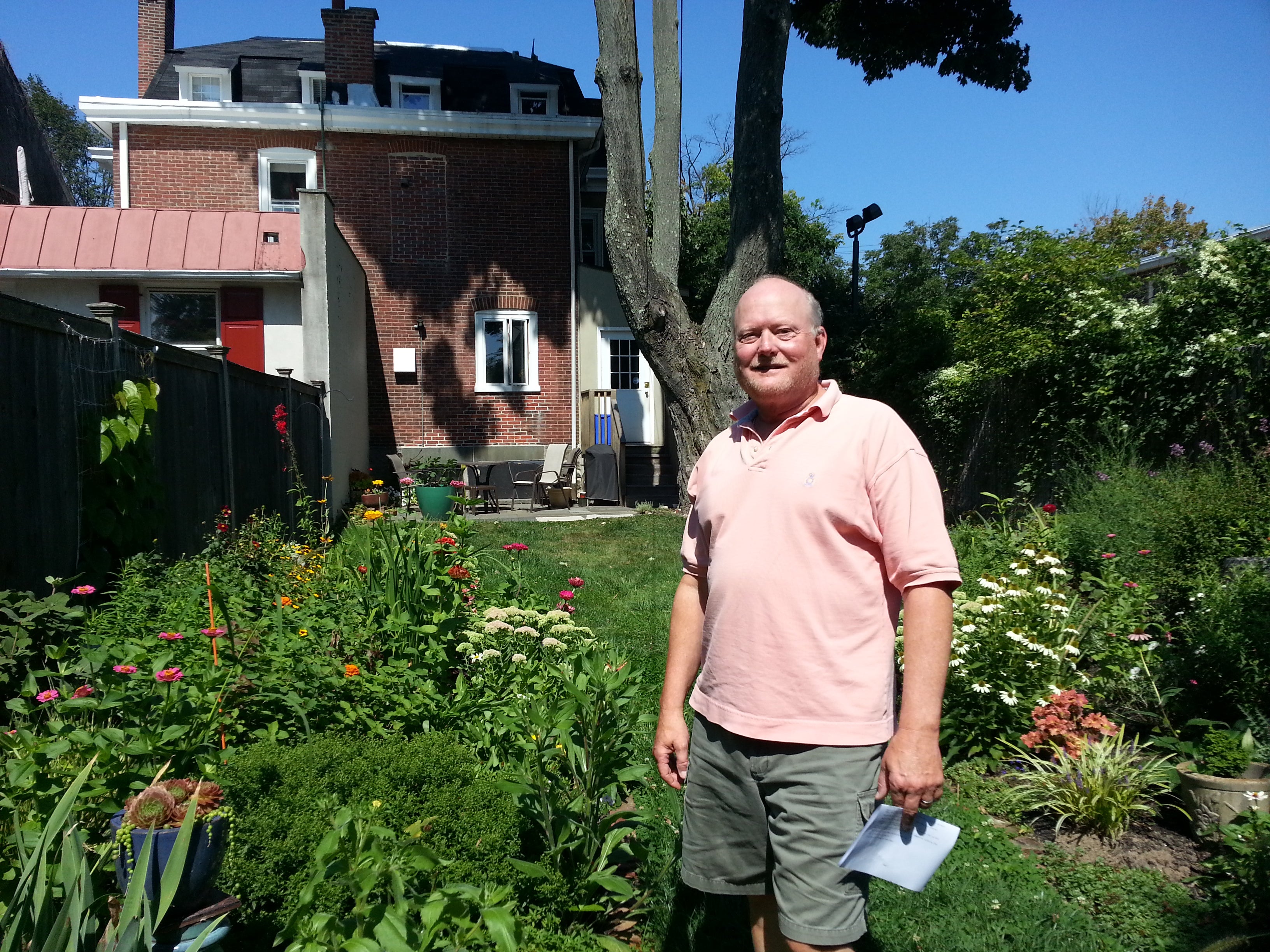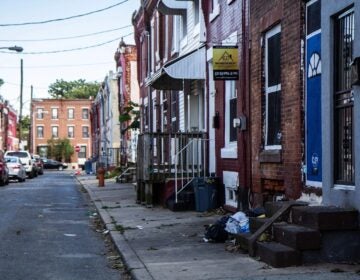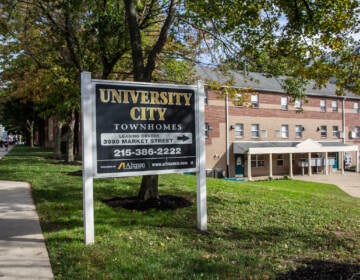Reflections on 40 years of Philadelphia City planning
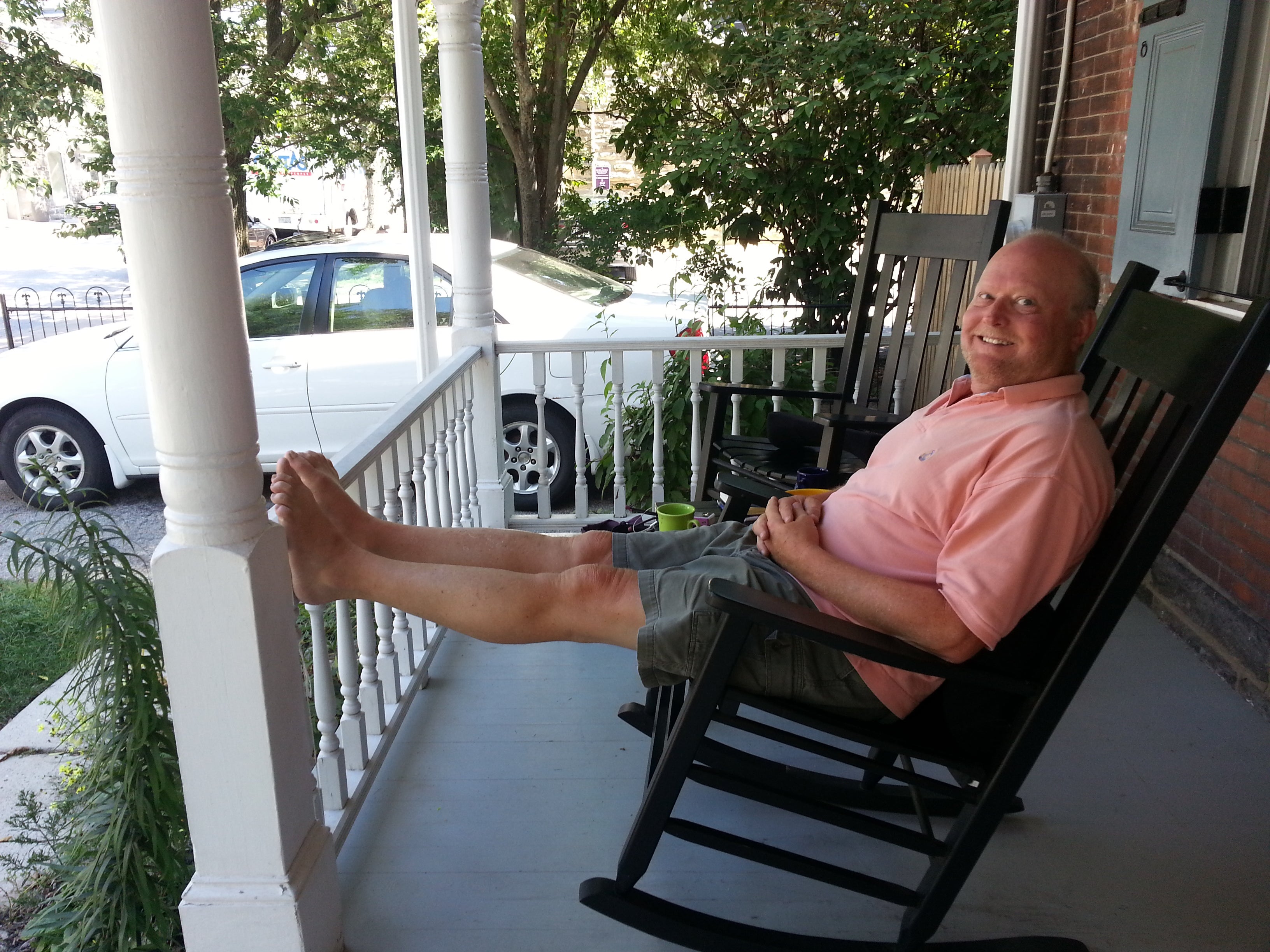
Newly retired Richard Redding reflects on Northeast Philadelphia, zoning by variance and ordinance, community redevelopment and gentriciation
PlanPhilly sat down with recently retired Philadelphia City Planning Commission Planning Division Director Richard Redding to talk about his 40 years (technically, 39 years, eight months) with the city. We got a bit of a history lesson, and a reminder of the patience urban planning work requires. The following is an excerpt from that conversation. Redding’s replies are direct quotes, unless otherwise indicated by parentheses or italics. The video is a smaller excerpt. The order of some questions has been changed, to keep like topics together.
PlanPhilly: Did you always know you wanted a career in planning?
Richard Redding: Yes. I was always interest in cities, urban issues, sociology, political science, drawing, art, writing.
PP: How did you get your start with the Philadelphia City Planning Commission?
RR: My first day was Nov. 4, 1974. I was a planning commission trainee, assisting the Northeast planner. And I went to grad school at Temple at night.
PP: Eventually, you became the Northeast Planner. What was the Northeast like back then?
RR: In the 1970s, there were a lot of zoning variances, and rapid development. The main surge of development there had already happened, but developers were gobbling up (properties) to fill in the gaps. The first project I worked on was an open space and recreation study analyzing all undeveloped land. I did a lot of that field work by bicycle. I was living in Northeast Philly at the time. And I got to know Northeast Philly by the back of my hand. I would bike to every parcel that was over an acre with my clipboard, my checklist. (He had a 10-speed road bike from Kmart.)
PP: Did anything significant come from that study?
RR: One of the good results was protecting land along the Poquessing Creek. (The study) had some of the earliest ideas for a linear park there, around the edge of what is now Franklin Mills Mall and was then the Liberty Bell Race Track. (Stringing together land along the creek has taken a lot of time.) Decades later, there’s been lots of progress, but there is still more to go. I always say to get something important done, it takes more than one plan, and it takes a lot of patience and perseverance.
PP: If you, the young planner, knew then what you, the experienced planner, knows today, is there anything that you would have tried to make happen differently (in the Northeast)?
RR: I’m not even sure if it was possible to do, but there was so much piecemeal development of small parcels by variance, that I don’t think the end result is anything to boast about – so a more comprehensive and a more coordinated approach to development is something I would have liked to have seen. And more urban design principles, with emphasis on landscaping and walkability. Some of those concepts didn’t become super-important until later decades.
Redding said regardless of experience and intent, these goals might not have been achievable back then because the demand was for auto-oriented development; neither residents nor planners thought nearly as much about walkability and transit as they do now. And the development by the time he arrived was mostly small, infill projects between the larger parcels that were already built upon.
PP: I know some areas of the Northeast have definite Main Street areas, but some sections don’t. Is it possible to retrofit these places with more urban development?
RR: Yes. For example, I think that the Cottman and the Boulevard shopping district area is possible to retrofit, to make this auto-oriented collection of shopping centers more walkable. We could change the pattern of the buildings, (and add more) pedestrian routes to make it a more sidewalk window shopping type of area. Or it could be a hybrid, a cross between auto-oriented shopping center with certain nodes related to transit, bus routes, and so forth, that have buildings right up to the sidewalks, pedestrian paths. It’s something recommended in the district plan.
PP: During your time in the Northeast, when decisions were made parcel by parcel, were residents OK with that?
RR: I don’t recall them saying any different. They were kept busy trying to deal with variance after variance after variance. I know it was difficult for them.
Between his time as a planning trainee and landing the Northeast Philadelphia planner job, Redding worked in North Philadelphia on a redevelopment plan for the area West of Broad Street. Through all of it, he spent a lot of time at community meetings, and said he learned early on that building relationships with community residents and regularly meeting with and talking to them led to the best planning work. For much of his career – more than 20 years – he was the West Philadelphia Planner. He was then promoted to Director of Community Planning. Two years ago, his title changed to Director of the Planning Division.
PP: How does the use of zoning variances and zoning by ordinance in recent years compare to what you were experiencing back then? Please talk about both before and after the new zoning code.
RR: My understanding is statistics are showing fewer variances today in Philadelphia, which is definitely a positive trend. The zoning variance context in Northeast Philadelphia has changed tremendously, as there’s not a lot of opportunities for new development. But we are gradually approaching an era of redevelopment in Northeast Philadelphia, as it has matured so much.
The biggest changes with the new zoning code are: Progressive moves in terms of zoning policies being reflected in the code – things like transit oriented development and walkability supported through zoning. But there’s so many, a whole laundry list of important improvements.
(Relative to community participation) the new code implements the RCO (Registered Community Organization) system, which is an attempt to rationalize a system of community organizations that had not been coordinated and level the playing field in terms of notification of the citizens and the communities. I think these are good goals. I have a very favorable opinion of the new zoning code. Think it takes important steps in right direction.
PP: City wide, there still are variances come forward through council, zoning changes by ordinance.
RR: It seems like fewer, but it is continuing. The purpose of the zoning code was to sort of take away a lot of the reasons for modifying zoning through ordinance after ordinance after ordinance by creating a stronger zoning foundation. It was hoped there would be fewer variances and fewer councilmanic ordinances changing the zoning. I think both things are being accomplished.
Redding clarified that not all zoning-by-ordinance is created equal. Some of it is very good policy – for example, every new district-level comprehensive plan calls for re-zoning of portions of some neighborhoods, both to help achieve plan goals and to change old zoning to match current land use. These changes happen via city council ordinance. Redding said some projects are so big and take up so much space in a neighborhood that it also makes more sense to use ordinance instead of variance.
RR: However, having city council change the text of the code, through things like overlays, or changes in requirements or changes in standards and dimensions (within a zoning class description), I think that’s what a new zoning code hopes to reduce.
PP: Between being a planning trainee in Northeast Philadelphia and becoming the Northeast Planner, you served as the North Philadelphia Planner. You said that had profound impact on you. Could you talk about that?
RR: That was a time when people in North Central, which is on the West Side of Broad, going across to Ridge Avenue and Glenwood Avenue, the communities felt really neglected by city government. One of the major activists there at the time was Milton Street. It was also early on in the era of the Community Development Block Grant. Established in 1974, it changed the way funding was doled out to cities for community development and community economic development. (Redding said the analysis had an impact on city spending decisions and resulted in a greater amount of federal funds going to North Central Philadelphia).
It was a time when the previous initiative in North Philadelphia, Model Cities, was being increasingly dismantled and was expiring. Communities were protesting, really protesting, that City Hall’s not providing any resources and very much hope for these neighborhoods people call North Central Philadelphia. I had the good fortune to be able to work closely with the Office of Housing and Community Development – something I’ve tried to do all through my career – and with the Redevelopment Authority, so the planning commission can be in partnership with these other agencies instead of operating in separate fiefdoms.
Together with OHCD we worked on targeting of housing programs through careful analysis, block by block. using Census block data and field data to come up with much more specific plans, resulting in much greater expenditures of CDBG funds in that section of Philadelphia. There was a lot of community interaction, big and small community meetings, and angry protesters and activists. I was able to really make strong connections with many of the community groups in areas like Strawberry Mansion and Brewerytown. It was my introduction to inner city issues. I really learned a lot and found it to be quite rewarding, stimulating. I felt folks in North Philly- in terms of community meetings, treated me different than the folks in Northeast Philly had. In the Northeast, I was expected to be there, and almost taken for granted. In North Philadelphia, the reaction was different. They seemed to me to be saying they really appreciated that a city planner would come out to this neighborhood, on this night, to this meeting, and be enthusiastic about working with community for the benefit of that community.
In my career, I’ve put an emphasis on revitalizing neighborhoods that are struggling, reducing blight and redevelopment and neighborhood improvement.
PP: Earlier, you said one of the things you’re proudest of is your urban renewal work. Can you talk about how you have used urban renewal to benefit different neighborhoods in Philadelphia, and some of the key projects?
RR: Urban renewal is a poorly understood process. … A lot of people are pretty frightened of urban renewal. They feel it can be a threat to people who might be subject to displacement from the community. Some people think it’s kind of the heavy hand of government (because it can) involve the condemnation of land and/or buildings. So it can be seen in a negative light. I chose to see it in a very positive light, where urban renewal is an import tool in the planner’s toolbox that allows us in many cases where we otherwise may not be able to do it, to carry out a community improvement project, such as create affordable housing. Urban renewal has assisted with affordable housing projects in most neighborhoods in Philadelphia. Hundreds of projects, many, many hundreds of millions of dollars of investment, assisted through urban renewal.
As a city planner, one of my goals has been to help the communities understand what urban renewal is, what it’s doing, on a factual basis, not on the basis of rumors. I think that was an important accomplishment. As far as projects aided by urban renewal, historically, there was Independence Mall and the Shops at Liberty Place. But urban renewal’s greatest importance I think is all throughout the neighborhoods, creating community development projects and revitalization projects.
Commercial corridors are a part of commercial revitalization efforts. But most of all it has been used to create affordable housing where there had been vacant land or vacant buildings. It’s been used a tremendous amount for renovation, including historic preservation projects. Some examples: The Holmes School in West Philadelphia, and Camphor-Brooks and Dunlap (Apartments). They are now senior apartments. Vernon Apartments on 33rd in Strawberry Mansion is a renovation that was beautifully done.
Through urban renewal, the city is able to bring (property) into public ownership, then transfer to developers. The biggest reason we use it is to finalize assembly of redevelopment sites. A developer tries to develop properties and in many cases is able to purchase 90 percent of the parcels, but unable to get the remainder. Sometimes the owner can’t be found, sometimes an owner is asking an exorbitant price that doesn’t makes sense. Then the developer turns to the city.
PP: You said before that one aspect of urban renewal, this process we’ve been talking about, or when a neighborhood is becoming revitalized even through market forces – sometimes there is displacement of existing residents. And you noted there can be a tendency not to talk about this kind of gentrification, but you think it’s much better to talk about it and deal with it.
Can you talk about your experience with this in Philadelphia?
RR: Displacement as a result of gentrification, I think it does happen. I think over time when we look at Philadelphia neighborhoods it’s almost always happening somewhere in some small pocket of our city. And I think the gentrification and displacement pressures are the result of private investment and private market forces.
I don’t think government should try to change the private market forces. If we tried to change it, I don’t think we could. I think the government can address gentrification issues, can balance or mitigate it. It doesn’t solve problem 100 percent, it doesn’t satisfy everybody out there. But there is a whole long list of programs that, when a family feels that they’re in danger of being forced out of their home, can help a family stay in their home.
For instance (the Office of Housing and Community Development programs for) basic systems repair, settlement grants, and all of the housing programs preserving rental housing and creating home ownership housing. (These) either create affordable housing or allow people to better be able to afford the upkeep of their homes. Also a lot of programs that help families financially, and (housing pressure) can be eased through these, so if the rent goes up, or taxes go up, (people) have more disposable income to be able to spend on rent and taxes and they’ll be able to stay in their homes. Programs such as the earned income tax credit, such as food stamps, such as health care for children, programs for foreclosure prevention.
Redding said many of these programs are detailed in Shared Prosperity, the city’s anti-poverty plan. He compiled a list for the PCPC as well, and it’s attached below this article.
PP: You spoke earlier of your work on the West Philadelphia Plan, and how one of the goals it set has just recently become reality. Please tell us about that.
RR: It was a 150-page comprehensive plan published in 1994. The major emphasis of the plan was the neighborhoods, outlining development opportunities and preservation opportunities in all the neighborhoods. It helped in the financing of many affordable housing and community improvement projects throughout the neighborhoods.
We also took a long look at University City in the plan. We took a look at historic preservation and the creation of historic districts, much of which has happened. We also recommended in favor of a special services type of district that is now known as the University City District. At the time of the plan, that was an idea in its infancy being promoted by an important community leader named Barry Grossbach from Spruce Hill, some other leaders in University City area.
We also (studied) the area around 30th Street Station, and noticed there was a lot of really bad sidewalk conditions and food trucks with loud generators running, and just kind of a messy and chaotic scene, right out in front of 30th Street Station, which is one of the great – one of my colleagues calls it a civic palace – just a wonderful public space. We (examined) the Market Street frontage of that station, and also the frontage of the Post Office across the Street, because 30th Street Station and the post office building are sort of a matching pair of monumental buildings, really important in the City of Philadelphia. We … came up with the recommendation for the Grand Public Room, which would be a wonderful pedestrian plaza, or Plazas, between 30th Street Station and the post office on the 2900 block of Market Street. We recommended a big open plaza with a lot of trees, greening, gathering place – something that’s fitting with the wonderful buildings flanking it.
I often feel that in order to get something important accomplished you need more than one plan. Many, many years later the planning commission – and I was very much involved in this – we commissioned a study by Bohlin Cywinski Jackson – BCS – we called it Station Square. And it was a more detailed plaza for a major pedestrian plaza outside of 30th street station.
Around that same time, a series of meetings were taking place, where the City of Philadelphia, under the leadership of deputy mayor Rina Cutler, put together meetings of government agencies, the railroad agencies, and the area institutions and universities and private developers, (talking) about coordinating all of the construction activity and coordinating all the changes taking place around 30th Street Station.
The planning commission presented its plan for Station Square. We also presented a plan for other pedestrian improvements in the general area. Through these meetings, we were able to come up with a great accomplishment where PennDOT stepped forward and agreed to pay for the infrastructure to create the plaza right in front of 30th Street Station. I think a couple of million dollars were needed. PennDOT built all of the paving, concrete, structural elements of this plaza.
So we were delighted that it was actually going to happen, but at same time concerned about long-term maintenance and upkeep of the plaza and programming. Because that’s really what makes a public space successful – how it’s managed, and hopefully that it won’t be just a place to collect liter, but instead will become truly a gathering space.
(University City District Director Matt Bergheiser) participated in the 30th Street meetings and his staff did also. And I was able to catch him in a sidebar during one of these meetings. I said your organization, the University City District, would be the perfect vehicle for maintaining this plaza over time. I doubt if it was just that discussion that made it happen, but not a long time later, we learned that University City would become the maintainance organization, the caretaker for the plaza. University City came up with the name the Porch at 30th Street Station. They did plantings, furnished tables and chairs, and most importantly they put full time staff in charge of that space, just taking care of it day in and day out. I am totally delighted at the way that space has turned out. There’s wonderful programming and events.
I’m happy to say I had a role over decades in creation of that public plaza.
PP: What did it feel like the first time you saw it completed, the first time you were there?
RR: It felt like a beautiful end of a long struggle.
Among the gifts Redding received at his retirement party is a bright orange chair from The Porch. Redding says he’ll now travel with his wife, continue to play saxophone professionally with Reverend Chris and the High Rollers (hear their version of Ray Charles’ Hallelujah I Love Her So here, see videos on Reddings’ website.), and enjoy morning coffee on his Chestnut Hill porch – a half-block from lively Germantown Avenue and the station where he used to catch the train to work. All that was key in convincing Redding and his wife, Madeleine Mist, to buy this particular house.
RR: I’m fully indoctrinated as a planner. I really believe in all this stuff.
WHYY is your source for fact-based, in-depth journalism and information. As a nonprofit organization, we rely on financial support from readers like you. Please give today.



